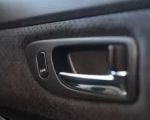How Can I Tell if My Car's Battery Is Bad? Recognizing the Signs Early
Have you ever gotten into your car, turned the key, and heard that dreadful click-click-click sound instead of the engine starting? If so, you've likely encountered a dead or failing car battery. I’ve been there, and it can be frustrating, especially when you're in a hurry or far from home. Understanding how to tell if your car’s battery is bad can save you from being stranded and prevent you from having to deal with the headache of unexpected breakdowns.

NTB-National Tire & Battery
6315 Prentiss School Dr, Canal Winchester, OH 43110, USA
Common Symptoms of a Bad Car Battery
Before diving into the technicalities of checking your battery, it's essential to recognize some common symptoms that could indicate a bad battery. These signs will help you understand when it’s time to take action and avoid finding yourself in an inconvenient situation.

Pep Boys
1200 W Washington Blvd, Los Angeles, CA 90007, USA
1. Your Car Struggles to Start
One of the most obvious signs of a failing car battery is when your vehicle has trouble starting. You might notice that it takes longer than usual for the engine to turn over, or you may hear the aforementioned clicking sound. This typically happens when the battery is unable to provide enough power to start the engine. A sluggish start is a classic sign that your battery is on its way out.
2. Dim or Flickering Lights
If your headlights or dashboard lights seem dim or flicker while you're driving, it could be a sign that your car's battery isn't providing a consistent flow of electricity. A weak or bad battery struggles to deliver the power required for all of your vehicle’s electrical components, causing these lights to dim or behave erratically.
3. The Battery Warning Light Appears
Most modern cars are equipped with a battery warning light on the dashboard. If this light comes on, it’s an indication that there’s an issue with your car’s battery or charging system. While it might not immediately mean the battery is bad, it’s certainly a signal that something isn’t right, and you should check the battery or the alternator.
4. Unusual Sounds When Starting the Car
If you hear a whining or clicking noise when trying to start your vehicle, this could also be a sign that your battery is bad. The sound could come from the starter motor or alternator, indicating that your battery is not supplying the necessary charge. It’s time to pay closer attention to the battery condition and perform some checks.
5. Swollen or Leaking Battery
A visible sign of a bad battery could be swelling, leaking, or bulging of the battery case. This often happens due to excessive heat or age, which causes the chemicals inside the battery to react in ways that damage the casing. If you notice any leaks or swelling, the battery should be replaced immediately, as this could potentially lead to a dangerous situation.
How to Check if Your Car's Battery Is Bad
If you’re noticing any of the above symptoms, it’s a good idea to check your car’s battery health. Fortunately, you don’t have to be a mechanic to do this. Here are some simple ways to check if your battery is the problem.
1. Check the Battery Voltage
The first step in diagnosing a bad battery is to measure its voltage. You can use a multimeter to check the voltage at the battery terminals. A healthy, fully charged car battery should read around 12.6 volts when the car is off. If the reading is below 12 volts, it indicates that the battery is losing its charge. When the engine is running, a voltage reading between 13.7 to 14.7 volts suggests the alternator is charging the battery properly.
2. Inspect the Battery Terminals
Next, check the battery terminals for any signs of corrosion, which can hinder the battery’s ability to deliver power. Corrosion appears as a white, powdery substance around the terminals. If you find corrosion, it’s easy to clean with a mixture of baking soda and water. Just be careful not to get any liquid on the battery itself, and always wear protective gloves and eyewear when handling the battery.
3. Perform a Load Test
A load test is another effective way to determine if your car’s battery is bad. During a load test, the battery is subjected to a simulated load that mimics the conditions the battery faces when starting the car. Many auto parts stores offer free load testing services. If the battery can’t hold up under this load, it’s time to replace it.
4. Inspect for Physical Damage
As mentioned earlier, physical damage to the battery, such as swelling or leaking, can indicate that it’s time to replace it. If you notice any of these physical signs, it’s important to handle the battery carefully and dispose of it properly. Leaking batteries are hazardous and can cause damage to your vehicle’s components.
What to Do If Your Battery Is Bad
If you've determined that your battery is bad, you’ll need to either replace it or get it recharged. If you're unsure, it's always best to seek professional help from a mechanic or an auto parts store. In some cases, if the battery is still relatively new, it may just need a good recharge. However, if the battery is old or damaged beyond repair, replacing it is the best option.
1. Replacing the Battery
Replacing a car battery is a relatively straightforward process, but it’s important to use the right tools and take necessary precautions. You can either do this yourself if you're comfortable, or you can have a mechanic do it for you. Be sure to dispose of the old battery properly, as car batteries contain hazardous materials.
2. Recharging the Battery
If the battery is still in good condition but simply lacks a charge, you can recharge it using a battery charger. This process may take several hours, and you should avoid attempting to start your car before the battery is fully charged. If you’re not sure how to properly recharge a car battery, it’s best to consult with a professional.
Preventing Future Battery Problems
Now that you’ve fixed your battery or replaced it, you can take steps to extend its lifespan and prevent future issues. Regularly inspecting your battery, keeping the terminals clean, and ensuring your alternator is working properly can help keep your car battery in good shape for years to come.
It’s also a good idea to replace your battery every 3-5 years, as this is typically when most car batteries start to show signs of wear. Keeping your car’s electrical system in good condition and avoiding long periods of inactivity will also contribute to a longer battery life.
Remember, a bad car battery can leave you stranded, but with a little knowledge and proactive care, you can avoid the stress and inconvenience of battery failure.





























